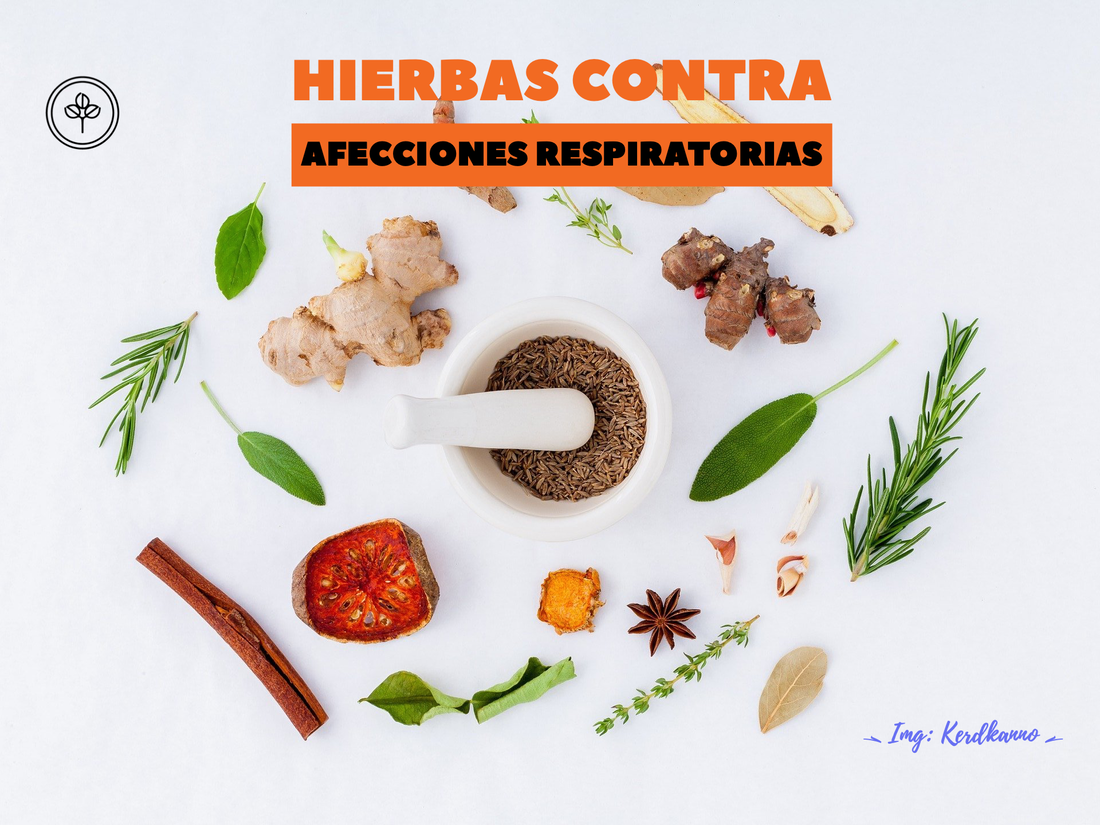
Herbs that help you fight viruses and respiratory infections
Share
How nature helps us fight respiratory diseases

The earth offers us multiple natural possibilities to solve different ailments. In a wonderful way, each geographical location and thermal zone contains its natural medicine cabinets where, by scrutinizing a little, the ancestral libraries of grandmothers, peasants and indigenous people can teach us a lot about the ethnomedicine of each territory.
The most widely used plants globally to treat infections
Regarding the issue of viruses and infections, there are plants to prevent respiratory diseases, while others are specific to relieve symptoms once the disease is acquired.
The biomedical journal Medwave mentions several scientific studies where plants have been used in different infectious areas with very positive results. For example, extracts of castile tea ( Lippia alba ), oregano ( Oreganum vulgare ) and mugwort ( Artemisia vulgaris ) have been studied for the properties of their essential oils on the infective activity of the yellow fever virus, which is an important pathogen in South America and sub-Saharan Africa. ( 1 )
Studies on blackberry extracts have also shown antiviral activity against herpes simplex virus 1, and even virucidal effect on already infected cell lines. ( 2 ) There are also studies done with guaicuru ( Limonium brasiliense ) and perlilla herb ( Margyricarpus pinnatus ) that show a level of activity of more than 95% when compared to antivirals traditionally used against herpes simplex virus 1 infections, such as Acyclovir with 99% activity. ( 3 )
Meanwhile, research on well-known Chinese medicinal plants such as Huang-qin ( Scutellaria baicalensis ) has demonstrated antiviral capacity against dengue virus type 2 (DENV2) ( 4 ), in addition to having antiherpetic activity. This activity has been corroborated with medicinal plants used in Malaysia such as the so-called leaf flowers (Phyllanthus spp). ( 5 )
There are also records of the ancient medicinal properties of different types of eucalyptus, which have shown their ability to suppress the activity of the Coxsackie virus, known for not being treated with antivirals and with a wide range of associated systemic pathologies. This situation is repeated in representatives of the genus Hypericum , such as Hypericum triquetrifolum . ( 6 )
Today, thanks to essential oils, in some cases we have access to herbs, plants and flowers that were previously reserved for communities surrounding the place where they grew.
Medicinal plants for respiratory conditions
Depending on where you live, you can take advantage of the medicinal plants that exist in that area to obtain the best results. Remember that plants remain the most important source for science in the search for new medicines. The truth is that the living libraries that inhabit peasant and indigenous communities that have developed their medicinal tradition through trial and error for thousands of years, contain invaluable information that can be re-discovered and harnessed by modern science for the good of all.
According to Sage Journals , Asian ethnomedicine, especially Chinese and Iranian, often uses native plants for preventive as well as therapeutic purposes in Asia and other countries.
We must start by understanding that there are 4 types of influenza viruses: types A, B, C and D, of which A, B and C infect humans. Type A viruses have caused pandemics, while type B influenza causes seasonal epidemics; and type C influenza is determined to be a mild human infection with no major impact on public health.
A list has been made taking into account the databases of reputable biomedical literature where the following plants are the most relevant,
Thyme ( Thymus vulgaris )
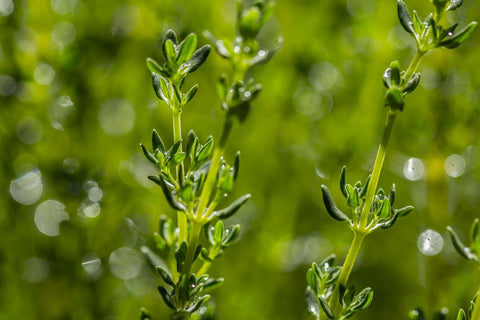
It is a plant that grows spontaneously in the Mediterranean basin. Our ancestors prepared it as an infusion for respiratory pathologies.
If the flowering tops of thyme are distilled, an essential oil is obtained that has much more concentrated antibacterial and antiviral properties (more than 100 kilos of fresh plant are needed to obtain 1 kilo of essential oil). Well, depending on where the thyme grows, it can produce up to 7 different types of essence with properties that can vary slightly.
Thyme chemotype thujanol contains monoterpenol-type aromatic molecules, with high skin tolerance, so it can be used directly on the skin of babies or pregnant women.
Thyme chemotype thymol contains a high percentage of phenols that are dermocaustic (burn on contact), for this reason it must be diluted in a carrier vegetable oil to prevent it from burning the skin. Likewise, if consumed in high doses and for a long time, it can affect the liver.
Both oils come from the same plant, but they should be used differently. For this reason, the packaging on a serious essential oil brand will specify the chemotype, i.e. the main molecule that the oil contains and that confers its therapeutic action.
Thujanol chemotype oil can be used topically and orally due to its broad-spectrum antibacterial and antiviral properties. It stimulates the production of immunoglobulins type A (ImgA) that acts by protecting the mucous membranes against invading pathogens, so it can be used in the treatment of any respiratory, urinary or vaginal infection.
Treatment for tonsillitis: apply 1 drop directly to the throat or swollen glands every 15 minutes initially. The first day we can go up to 8-10 applications; the second day we should reduce it to 3 or 4 and continue with this regimen until complete remission, although in general two days will be more than enough.
Another option is to dilute 4 drops of oil in a little raw honey or in a little warm water with Stevia to soften the taste and take 4 times a day on the first day, then 3 drops diluted also 3 times a day from the second day of treatment.
Because this oil is so popular it is often in short supply, but it can be replaced by marjoram essential oil chemotype thujanol, as its molecular composition is almost identical as are its therapeutic benefits.
Honeysuckle flowers ( Lonicera japonica )
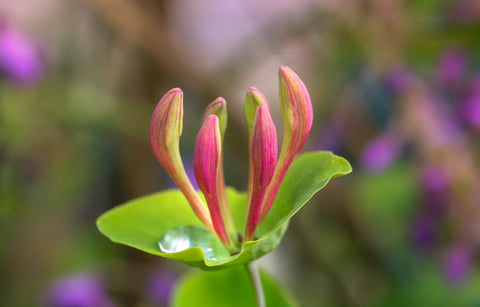
There are two main types of honeysuckle, European ( Lonicera periclymenum ) and Japanese ( Lonicera japonica ), the latter being widely used in Chinese medicine to treat many diseases.
Chemoprevention, mitochondrial energy metabolism and reactive oxygen species (ROS) uptake are some of the powerful benefits of the compounds present in honeysuckle. In this same sense, honeysuckle oil has antibacterial, antimicrobial and antibiotic properties. In addition, it is used for personal hygiene, home hygiene, aromatherapy and, specifically, to treat infections.
Andrographis ( Andrographis paniculata )
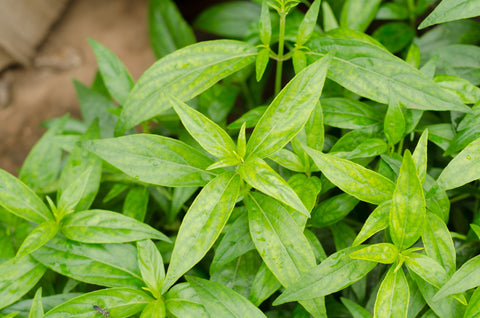
Popularly known as green chiretta, it is a plant that belongs to the Acanthaceae family. It has been used for centuries in Asia to treat upper respiratory tract infections, gastrointestinal problems, fever, sore throat, among other diseases.
Peppermint leaf and essential oil ( menthae piperitae atheroleum )
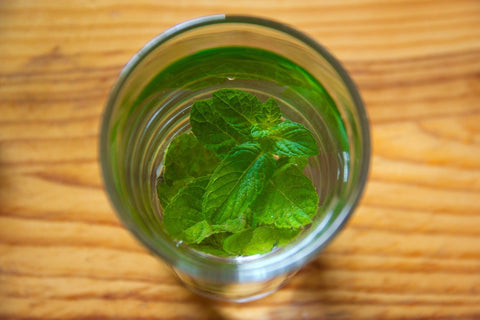
According to the U.S. National Library of Medicine and the National Institutes of Health, therapeutic uses of peppermint essential oil include symptomatic treatment of digestive disorders and symptomatic treatment for coughs and colds. 3-4 drops of the oil added to a little hot water to be used as inhalations. ( 7 )
Peppermint essential oil is contraindicated for infants under 2 years of age because menthol can induce apnea and reflex laryngospasm. Likewise, preparations with peppermint oil to be applied near the nose or chest should be avoided because it can cause spasms in the bronchi and larynx, not only in infants, but also in some particularly sensitive adults.
In a more recent study on the effects of essential oils in the treatment of COVID-19 published by the same National Center for Biotechnology Information of the United States (NCBI), it concludes that oils containing menthol (peppermint), eugenol (clove) and carvacrol (oregano), have demonstrated effectiveness against several SARS-CoV-2 proteins.
The same study mentions that menthol-rich plant extracts have been used in traditional Asian medicine for the treatment of respiratory ailments for centuries. Menthol has been reported to provide symptomatic relief of nasal congestion associated with rhinitis and the sensation of dyspnea associated with chronic obstructive pulmonary disease by its specific interaction with a cold-menthol-sensitive receptor (CMR1) located in trigeminal nerve endings ( Eccles 2003 ).
Calendula ( Calendula officinalis )
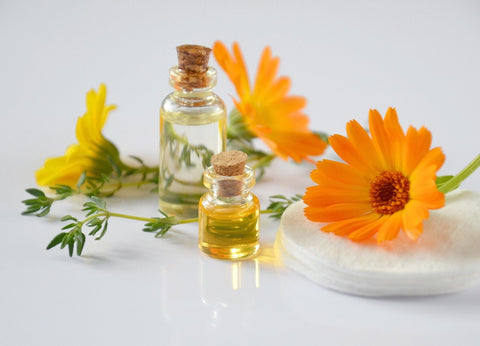
Calendula flower components include triterpenoids and flavonoids, with at least eight bioactive triterpendiol monoesters identified in dried calendula flower extracts. Pharmacological properties attributed to plant components include immunostimulant, antibacterial, antiviral, antiprotozoal (antiparasitic), and antineoplastic (preventing the development, growth, or proliferation of malignant tumor cells) properties. ( 8 )
Among its benefits are that
- Promotes skin healing.
- Contains natural antiseptic/anti-inflammatory properties.
- Contains precursors for the production of antioxidant vitamin A.
- Reduces eye infections and protects against UV rays and oxidative damage.
- Helps soothe the mucous membranes of the throat while relieving pain.
Expectorant medicinal plants for flu and the common cold
Tulsi ( Ocimum Sanctum )
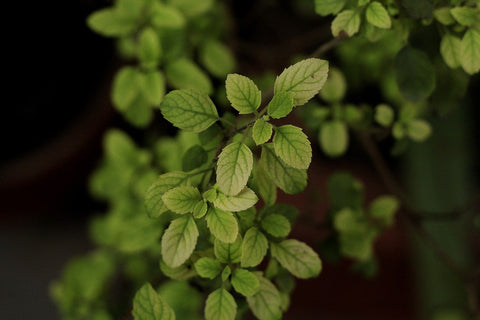
Also known as holy basil, tulsi is a plant used in Ayurvedic medicine for its antibacterial, antifungal, anti-inflammatory, analgesic, antioxidant and adaptogenic properties. Tulsi is also one of the herbs in Ayush Kwath, an Ayurvedic herbal formula recommended by the Indian government to boost immunity and fight COVID-19.
"Ayush Kwath, due to its immunomodulatory (substances that have the ability to increase or decrease the immune response), antiviral, antioxidant, anti-inflammatory, antiplatelet, antiatherosclerotic, hepatoprotective and renoprotective properties, appears to be effective in immunoregulation to control viral infections such as COVID-19." ( 9 ) In addition to tulsi, Ayush Kwath incorporates cinnamon, ginger and black pepper.
Licorice ( Glycyrrhiza glabra )
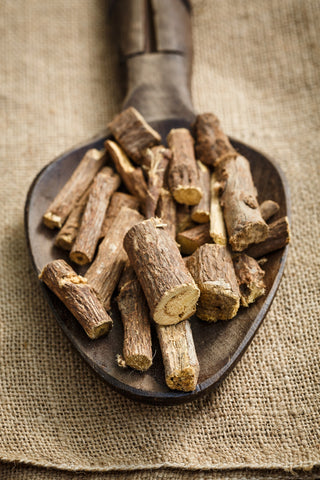
Licorice has two main compounds: liquiritin , which helps prevent the replication of SARS-CoV-2, according to laboratory tests. Compounds in licorice root have demonstrated antiviral and anti-inflammatory effects on the body, as well as the ability to modulate the immune system.
Glycyrrhizin , the other compound in licorice, has been used in Chinese medicine as a treatment for coughs and viral respiratory tract infections. ( 10 )
Clove ( Syzugium aromaticum or Eugenia cariophylata ))
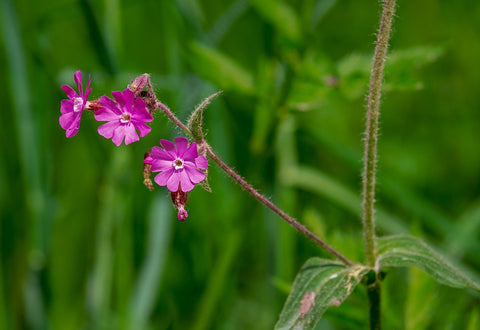
Eugenol is the major component of clove essential oil and contains a range of pharmacological functions such as antimicrobial, anti-inflammatory, analgesic, antioxidant and anticancer. It is especially used in dentistry to reduce pain and inflammation, the effect of which is said to be due to the suppression of prostaglandins and other inflammatory mediators.
In terms of infections, it is used to combat infections caused by some types of bacteria, especially staphylococci and E. coli , or by fungi, due to its antifungal action. This action seems to be related to the presence of eugenol, methyl salicylate, kaempferol, gallic acid and oleanolic acid in its composition.
Clove is contraindicated during pregnancy, breastfeeding and in children under 6 years of age, as there are no studies of its effects on these groups. It is not recommended in cases of gastritis or ulcers.
Sage leaf ( Salvia officinalis )
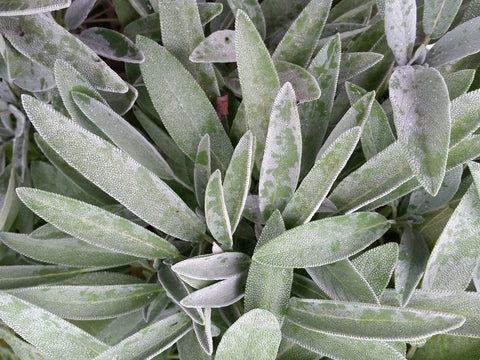
Used in aromatherapy applications, clary sage essential oil is known to stimulate and clarify the mind, while displaying a harmonizing, uplifting, calming and strengthening effect on the senses to alleviate negative moods. It is known to promote a sense of focus, improve memory and relieve discomfort in the digestive, respiratory and female reproductive systems.
Cosmetically or topically, sage essential oil is generally used to remove toxins, soothe minor skin abrasions, diminish the appearance of blemishes, and treat stretch marks, sores, and swelling. Its moisturizing and conditioning properties help soothe dryness and irritation.
Other plants used by Native North Americans include Osha root ( Ligusticum porterii ) and snake root ( Polygala senega ). These roots are prized by these communities as they are effective in treating the respiratory tract.
Immunostimulant herbs to treat flu and common cold
Echinacea ( Echinacea purpurea )
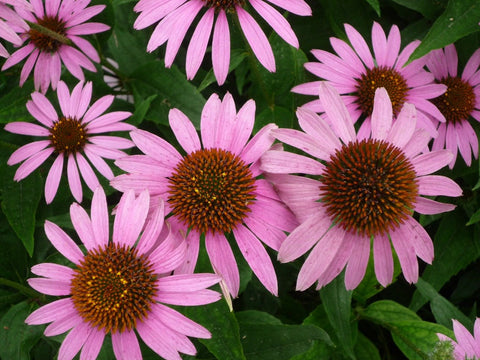
Its immunostimulant activity is associated with water-soluble polysaccharides, free or esterified phenolic acids (echinacoside, among others), polyene compounds and isobutylamides. It also acts as an antibacterial and antiviral agent, reducing the spread of infectious agents by inhibiting tissue and bacterial hyaluronidase.
Clinical trials have shown that echinacea extracts, administered early in the respiratory process, appear to shorten the duration and severity of colds and other respiratory tract infections.
The effectiveness of Echinacea depends largely on the type of preparation used, which should always be standardized, and the time of administration, which should be at the beginning of the infectious process.
The immunostimulant action of echinacea could pose interactions with immunosuppressive therapies, so, as a precautionary measure, it should not be associated with treatments with corticosteroids, immunosuppressants or cytostatics.
Eucalyptus ( Eucalyptus globulus )

Essential oils obtained from eucalyptus (Eucalyptus globulus) are traditionally used to treat various respiratory ailments, including pharyngitis, bronchitis, and sinusitis. Eucalyptus oil and its active component, 1,8-cineole, have been shown to have muscle relaxant effects by decreasing airway smooth muscle contractions induced by different agents ( 11 ). Furthermore, clinical studies have indicated that inhalation of cineole (extracted from eucalyptus) exerts anti-inflammatory (by blocking the release of cytokines) and analgesic effects, so it can be effectively used in COPD patients and asthmatics ( 12 ).
Garlic ( Allium sativum )
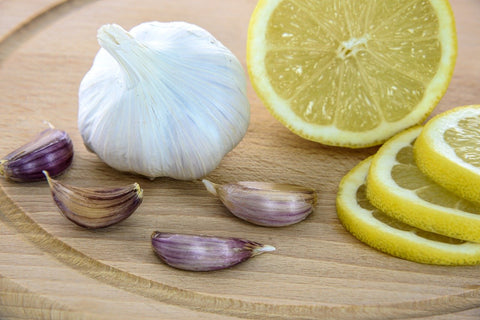
According to NCBI, garlic has historically been used to treat flu, the common cold, and many other types of infections. When garlic essential oil was analyzed, 18 compounds were identified, of which 17 exerted activity against the ACE2 protein and the main protease of SARS-CoV-2, indicating that all 17 compounds have great potential to treat patients with Covid-19. ( 13 )
Ginseng ( Panxquin quefolium )
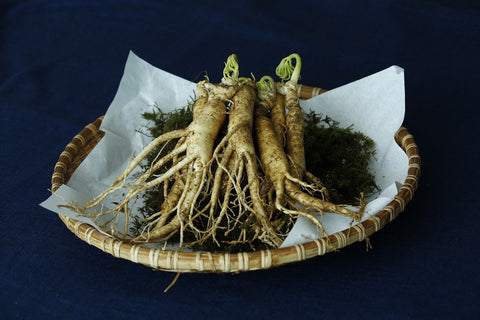
Although there are several species of ginseng, Korean ginseng (Panax ginseng C.A. Meyer), American ginseng (Panax quinquefolius L.), and Chinese ginseng (Panax notoginseng) are the most popular experimental models and have received significant attention for their potential use in relieving disease symptoms and improving health conditions. These types of ginseng have been proven effective in different respiratory conditions. Influenza has 3 main types A, B and C, with A being the most virulent in humans, mammals and birds.
Several studies have demonstrated the antiviral activity of red ginseng extract (RGE) and its purified components on influenza type A infection both in vivo and in vitro. ( 14 )
Intranasal coadministration of Korean RGE (200 mg/kg body weight) with inactivated influenza A virus (PR8) increased specific antibody levels in treated animals and induced enhanced protective immunity compared to immunization with PR8 alone (25 mg). ( 15 )
Several studies point to the efficacy of American ginseng in alleviating microbial respiratory tract infections. A proprietary extract of the roots of American ginseng (Panax quinquefolium), rich in polyfuranosyl-pyranosyl-saccharides, has been shown to be effective in preventing respiratory infections in institutionalized elderly people and in healthy adults. ( 16 )
Myrrh resin ( Commiphora myrrh )
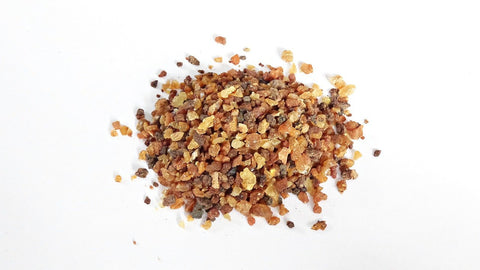
Myrrh resin is obtained from cracks in the stem of myrrh bushes or trees. Traditionally, resin has been used to treat coughs and flu. It is well known for its medicinal properties, such as immunomodulatory, anti-inflammatory, cytotoxic, antioxidant, antimicrobial, hepatoprotective, antitumor, antiulcer and analgesic. Research suggests that mouthwash with myrrh could be effective in combating Covid-19. ( 17 )
Ginger rhizome ( Zingiber officinale )

Ginger root tea is a preferred treatment for respiratory tract infections, according to traditional Chinese medicine. It is recommended for its anti-inflammatory and expectorant properties, perfect for treating congestion and sore throat.
In Ayurveda, the traditional medicine of India, it is recommended to drink an infusion of grated ginger every day on an empty stomach, accompanied by a little lemon and Stevia or raw honey to increase the production of white blood cells.
Because using herbal medicine can be somewhat complex, it is recommended that you consult with a naturopathic doctor or health professional who can guide you regarding specific herbal combinations for your needs.

1 comment
Toda la farmacia de la naturaleza, la más pura y perfecta a nuestro alcance. Gracias